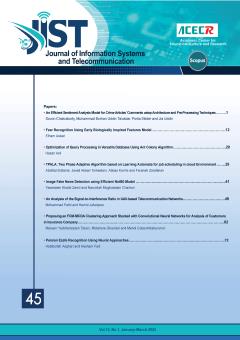Todays, facial and vocal emotional expression recognition is considered one of the most important ways of human communication and responding to the ambient and the attractive fields of machine vision. This application can be used in different cases, including emotion an
More
Todays, facial and vocal emotional expression recognition is considered one of the most important ways of human communication and responding to the ambient and the attractive fields of machine vision. This application can be used in different cases, including emotion analysis. This article uses six basic emotional expressions (anger, disgust, fear, happiness, sadness, and surprise), and its main goal is to present a new method in cognitive science, based on the functioning of the human brain system. The stages of the proposed model include four main parts: pre-processing, feature extraction, feature selection, and classification. In the pre-processing stage, facial images and verbal signals are extracted from videos taken from the enterface’05 dataset, noise removal and resizing is performed on them. In the feature extraction stage, PCA is applied to the images, and the 3D-CNN network is used to find the best features of the images. Moreover, MFCC is applied to emotional verbal signals, and the CNN Network will also be applied to find the best features. Then, fusion is performed on the resulted features and finally Soar classification will be applied to the fused features, to calculate the recognition rate of emotional expression based on face and speech. This model will be compared with competing models in order to examine the performance of the proposed model. The highest rate of recognition based on audio-image was related to the emotional expression of disgust with a rate of 88.1%, and the lowest rate of recognition was related to fear with a rate of 73.8%.
Manuscript profile


